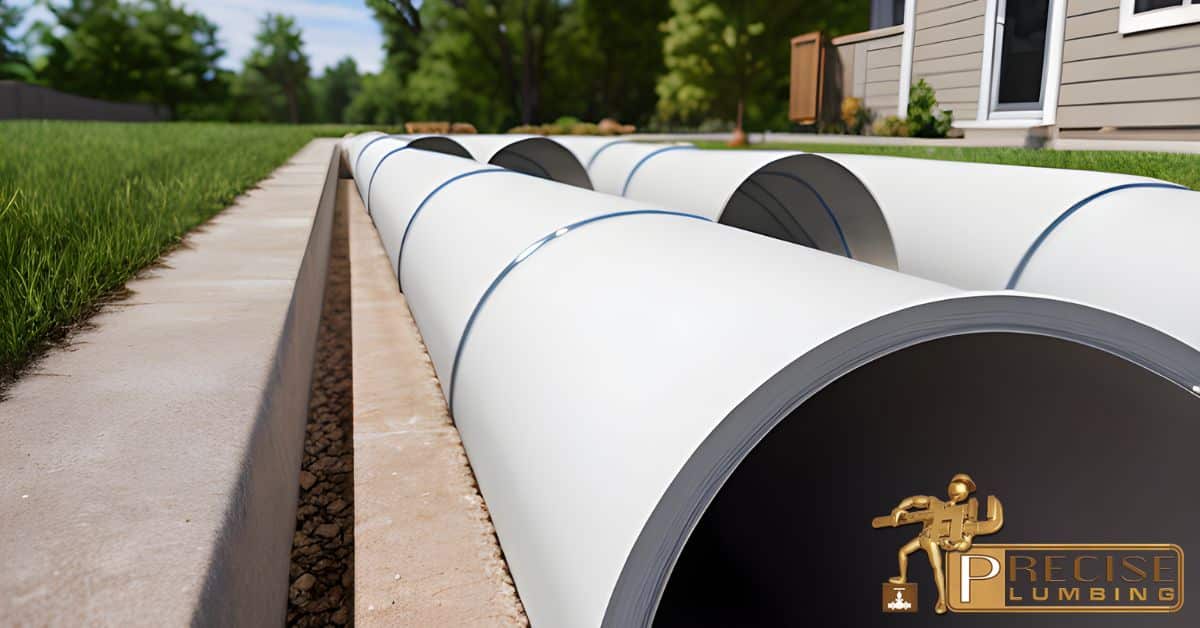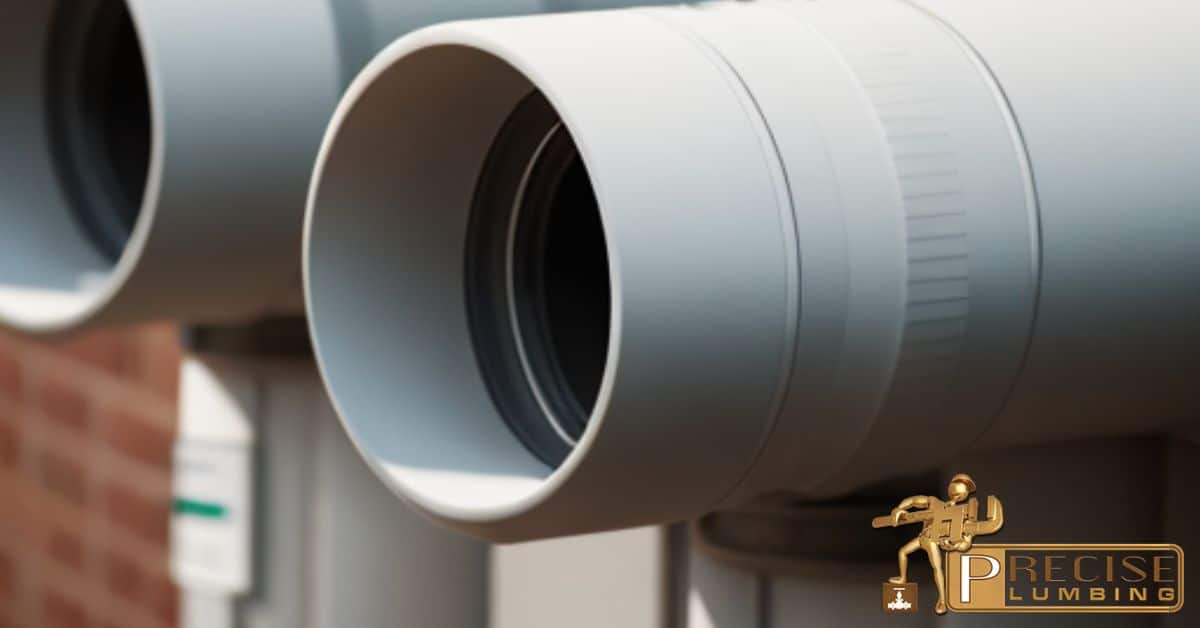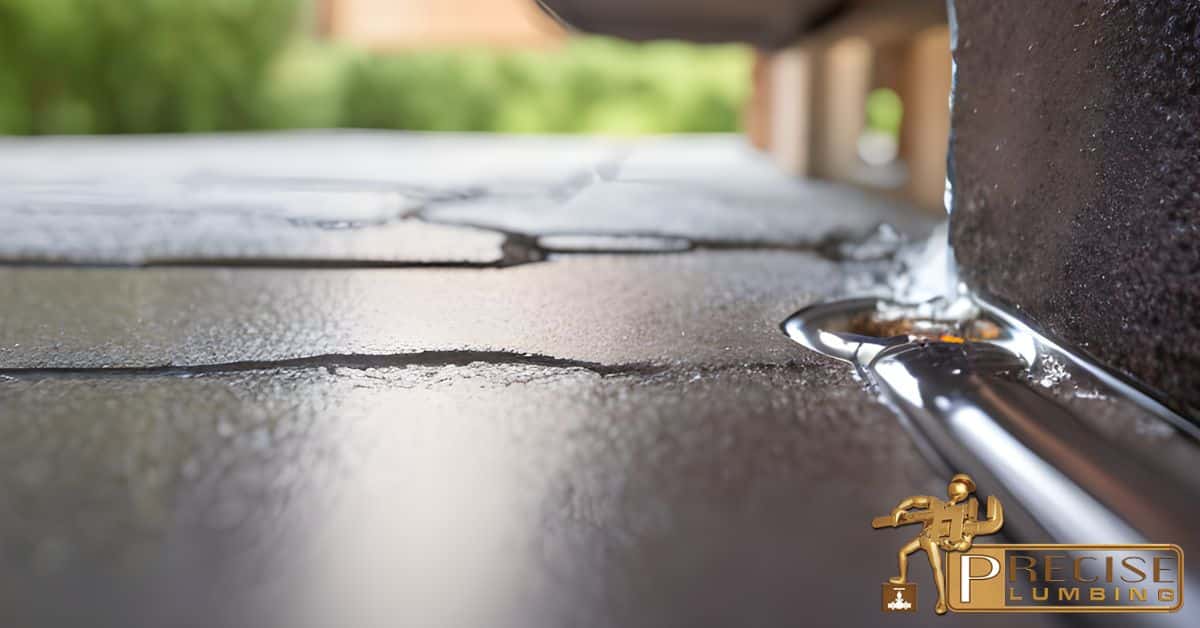The sewer system in your home is a very important part of keeping it clean and healthy. But many people don’t realize how important it is to understand and take care of their sewer lines until they have a problem. From clogs and backups to old lines and roots growing into them, sewer problems can cause a lot of trouble and cost a lot to fix if they aren’t fixed quickly.
By the end of this blog, you’ll know more about the sewer system, the most common types of sewers, the usual problems that can happen, and what you can do to stop problems and protect your sewer lines. We think that a homeowner who knows more about their sewer system is better able to keep it working and efficient, saving time, money, and stress.
How Do Sewers Work?
Canada’s sewer systems use a variety of methods to make sure that wastewater is handled well. Gravity-based sewer systems are the backbone of this infrastructure. Pipes that slope down allow wastewater to flow freely to treatment plants. This setup keeps the flow steady and keeps you from having to pump too much.
Even though some of Canada’s older towns still have combined sewer systems, where rainwater and sewage are collected at the same place, work is being done to separate these systems. The goal of the separation is to lower the number of combined sewer overflows (CSOs), which happen when the combined system gets too full during heavy rain.
Most sewer systems in modern towns are separate, with different pipes for stormwater and wastewater. Stormwater flows into nearby bodies of water, and garbage goes to plants where it is cleaned.
In some places, especially those that are colder, lift stations are built into the sewer lines. When gravity flow isn’t enough, these stations use pumps to move garbage uphill. This preventive step keeps the system running and makes sure that wastewater doesn’t freeze in the pipes.
Sewer systems must be kept in good shape through regular maintenance and checks. Pipes are cleaned and flushed on a regular basis to get rid of waste, sediment, and possible blockages. Inspections are done to look for leaks, cracks, or other structural problems that could make the system less reliable.
Meanwhile, sewage treatment plants are very important because they clean trash before letting it go back into the environment. They use different types of treatment, such as primary, secondary, and tertiary.
Physical processes like screening and sedimentation are used in the first step of treatment to get rid of big solids and debris. Biological processes are used in secondary treatment to break down organic waste and get rid of more contaminants. In tertiary treatment, advanced techniques like filtering, disinfection, and chemical treatment are used to clean the water even more, making sure it is safe to use before it is released.
In Canada, there are strict environmental rules for sewer systems that are meant to protect water quality and wildlife. These rules limit the amount of pollution that can be released and require regular checks and reports to make sure they are being followed.
Canada puts protecting the environment, public health, and water supplies at the top of its list of priorities. It does this by putting in place efficient sewer systems and effective ways to treat wastewater. Research and technological progress are always helping to make sewer systems across the country more reliable and long-lasting.
Types of Sewers
In homes in Canada, there are different types of sewers that serve different uses based on things like location, topography, and the amount of wastewater. Here is a list of the most popular types of sewers in Canada and a description of each:
1. Gravity Sewers
In Canada, gravity sewers are by far the most common type. They use a network of pipes and the force of gravity to move wastewater downhill. Most of the time, concrete or plastic pipes are used to build these sewer systems, and the size of the pipes depends on how much garbage needs to be moved. Gravity pipes are cheap and are often used in places where the land naturally slopes.
2. Pressure Sewers
Pressure sewers are used in places where gravity sewers don’t work, like on steep hills or where the water level in the ground is high. Pumps move wastewater through a network of pipes in pressure drains. Most of the time, steel or plastic lines are used to build these systems, which cost more upfront than gravity sewers. Pressure sewers are helpful in difficult areas and can get around things that would stop the gravity-based flow.
Gravity sewers and pressure sewers are the two most common types of sewers. In Canada, the following kinds of sewers are also used:
3. Combined Sewers
Combined sewers are popular in older cities and are made to carry both wastewater and rainwater through the same pipes. Combined sewer overflows (CSOs) can happen when these systems are overloaded by heavy rain. People are working to split the stormwater and wastewater systems to cut down on the number of combined sewer overflows (CSOs) and help the environment.
4. Separate Sewers
Cities that were built more recently are more likely to have sewers with different networks of pipes for wastewater and stormwater. This system makes sure that rainwater flows into nearby bodies of water and that wastewater gets to places where it can be cleaned. By splitting the two flows, CSOs are much less likely to happen when it rains a lot.
5. Infiltration/Inflow Sewers
Infiltration and inflow sewers are made to stop rainwater and groundwater from getting into the sewer system through cracks and leaks. These sewers receive and handle the extra water coming in. This makes the system work better and keeps sewers from overflowing. Infiltration/inflow sewers help reduce the amount of garbage that needs to be treated at sewage treatment plants by slowing down the flow of too much water.
The choice of sewer type for a home depends on a number of things, such as its location, the way the land is laid out, and the amount of garbage that is expected to be produced. Sewer systems are an important part of keeping Canadian towns clean and safe for the environment.
Most Common Sewer Line Problems At Home
Sewer lines in Canadian homes can have a number of common problems that can be annoying, dangerous to health, or bad for the environment. Here are a few of the most common problems:
1. Blockages
Blockages happen when substances like grease, hair, or solids build up in the sewer line and stop the flow of garbage. This can cause water to back up into the house, which can lead to bad smells, unclean conditions, and damage to the plumbing system.
To keep sewer lines from getting clogged, it’s important to be proactive.
First of all, don’t pour grease, oil, or fat down the drain because they can harden and build up over time. Instead, you should put them in a bag and throw them away. Second, use bathrooms only for what they were made for, and don’t flush things like feminine hygiene products, diapers, paper towels, and pet waste that can’t be flushed.
Putting strainers in your sink and bathroom drains can help catch hair, food, and other debris. These should be cleaned out regularly to keep your drains from getting clogged. Run hot water while rinsing food scraps down the drain to break up the pieces and keep them from getting stuck in the pipes.
Professional plumbers in Oakville need to check on the state of sewer lines on a regular basis to find problems or blockages before they get worse. Sewer backup cleanup services in Oakville can get rid of the waste that has built up and stop blockages from getting worse.
Use a plunger regularly to clear small blockages, avoid using harsh chemical drain cleaners that can corrode pipes, use garbage disposals properly by not overloading them and not throwing away things that don’t belong in them, and follow regular pumping and maintenance schedules for septic tank systems to prevent overflow and possible blockages in sewer lines.
By doing these things around the house, you can greatly reduce the chance of sewer lines getting clogged. This keeps wastewater flowing smoothly and reduces the chance of problems and damage.
2. Cracks and Leaks
Sewer lines can get cracks and break over time because of things like shifting ground, changing temperatures, and corrosion. These holes let wastewater seep into the dirt around them, which could pollute groundwater and cause environmental problems. Also, sewer gas can get into homes through cracks and leaks, which is bad for people’s health.
To keep your sewer lines from cracking and leaking, don’t pour harsh chemicals down the drain because they can hurt the pipes and make cracks or breaks more likely. Sewer lines need to be checked regularly so that any problems can be found and fixed quickly and easily.
Leaks need to be fixed right away because they can let garbage seep into the ground and cause problems for the environment. Also, a sewer line protector can add an extra layer of safety by putting a device around the sewer line to protect it from damage.
Keeping sewer lines clean keeps trash from building up, which can cause cracks or leaks. Don’t put too much water down the drain at once to keep the sewer lines from getting too full. Be careful when using heavy tools near sewer lines, because they can damage the pipes.
If you are worried about cracks or leaks in the sewer line, you should have a professional Oakville sewer line plumber check it out. They can find any problems and give the best advice on how to fix them or keep them in good shape.
By taking these precautions, you can help keep your sewer lines in good shape, stopping cracks and leaks and making sure they work right.
3. Root Intrusion
Tree roots can get into sewer lines to find water, especially if there are cracks or holes in the pipes. The roots can grow inside the lines, which can cause blockages and could hurt the sewer system’s structure.
To keep roots from getting into your sewer line, plant trees away from your sewer line. By keeping plants away from the sewer line, you can reduce the chance of roots getting in.
If you’re buying a house with a tree already planted in the yard, putting up a root shield is another good way to stop damage. A root barrier is a physical barrier that stands between the tree roots and the sewer line. This keeps the roots from growing into the pipes. Professional plumbers can help you choose the right type of root barrier and how to put it in place for your case.
Root inhibitors can be used as an extra step to stop roots from growing into the soil. Chemical treatments are put on the ground around the sewer line to stop tree roots from growing there. Talk to experts about how to use root inhibitors in a safe and effective way.
It’s important to check the sewer line often so that you can spot early signs of root intrusion. Root intrusion can be shown by slow draining, gurgling sounds, or repeated clogs. If you notice any of these signs, call a plumber right away so he or she can look at the problem and suggest answers.
The type and size of trees are also things to think about. Some tree species, like willows and poplars, have roots that tend to spread more. Root systems that can get into sewer lines are more likely to be well-established in older trees.
Also, the state of the soil is important. Loose or sandy soil makes it easier for roots to get into the ground. If you are worried about roots getting into your sewer line, you should talk to a professional plumber who can do a full inspection and give you advice.
4. Corrosion
Sewer lines, which are usually made of cast iron, clay, or plastic, can rust or break down over time. Corrosion can be sped up by being exposed to strong chemicals or wastewater that is corrosive. As sewer lines corrode, they can get cracks and breaks that make them less useful and could be bad for the environment.
When sewer lines rust, you should take a number of steps to fix the problem. The first thing to do is hire a professional plumber who can check the sewer lines carefully. By figuring out how bad the rust is, the plumber can give expert advice about what to do next.
Trenchless repair is one choice to think about. Some of these new methods, like pipe lining and pipe bursting, are less invasive and annoying than the old ways of replacing pipes. Trenchless fixes involve putting in a new lining or bursting the old pipe while replacing it with a new one. This reduces the amount of digging that needs to be done.
If the corrosion is bad and the pipes are badly damaged, it may be necessary to replace the pipes for a long-term solution. Even though this choice can be more disruptive and expensive, it is necessary for the sewer system to work well.
When figuring out the best way to fix corroded sewer lines, you should think about things like how old the sewer lines are. Older sewer lines are more likely to rust than newer ones.
Also, the material of the sewer lines is important. For example, cast iron is more likely to rust than other materials. Knowing how the sewer lines are made can help you figure out how vulnerable they are.
The state of the soil is another thing to think about since acidic soil can speed up the corrosion process. It is important to figure out what kind of dirt is around the sewer lines.
To keep the sewer lines from getting worse, a plumber should check on them on a regular basis. This preventative method lets corrosion or other problems be found early, so they can be fixed quickly and more damage isn’t done.
Some signs of corroded sewer lines are slow draining, the smell of sewer gas, roots growing into the pipes, and cracks or leaks that can be seen. If you see any of these signs, you should call a plumber right away so they can take a look. Plumbers know how to figure out what’s wrong and suggest the best way to fix it so that the sewer lines stay in good shape and work properly.
5. Age
Like any other kind of infrastructure, sewer lines don’t last forever. Older water lines are more likely to break down, which can lead to leaks, cracks, and other issues. Infrastructure that is getting old makes it more likely that it will break down and need to be fixed or replaced.
When sewer lines are old or getting old, there are only a few things that you can do to fix the problem.
The first step is to have a professional plumber look at the sewer lines. They can find any problems and suggest the best way to fix them.
You can also avoid problems with aging sewer lines by not putting grease, oil, and fat down the drain, flushing only toilet paper down the toilet, putting strainers in sink and shower drains, and rinsing food scraps down the drain with hot water.
There are different ways to fix pipes, such as pipelining, in which a new liner is put inside the old pipe, and pipe bursting, in which the old pipe is broken and a new one is put in its place. In very bad cases, however, the sewer lines may need to be completely replaced.
The best way to deal with old sewer lines varies on the situation, so it’s important to talk to a plumber to get advice from a professional.
Hire a Professional Oakville Sewer Cleanup and Repair Service
Your home’s health depends on your ability to understand and take care of your sewer system. We’ve talked about a lot of important things, from how sewers work, the different types of sewers, and the most common sewer line problems, how to avoid them and how to fix them. Taking preventive steps like regular checks and putting in place preventive practices can save you money and time on repairs in the future.
At Precise Plumbing, we clean and fix sewers, and we’re here to help you with all your sewer needs. Our team of skilled plumbers has the knowledge and tools to deal with any sewer problem quickly and effectively. Whether you have clogs, roots growing into the sewer lines, rust, or old sewer lines, we know how to fix the problem.
If you choose Precise Plumbing, you can be sure that your sewer system will be taken care of by professionals. We put quality work, great customer service, and results that go above and beyond your goals at the top of our list. Our goal is to make sure that your drain lines are safe and work well so that you can have peace of mind and a reliable plumbing system.
Don’t wait until a sewer problem gets really bad before fixing it. Get in touch with Precise Plumbing right away to set up a checkup or talk about your sewer cleaning and repair needs. Our team is ready to help you and give you the customized answers you need. Remember that a home that is healthy and comfy is built on a sewer system that is well taken care of.



